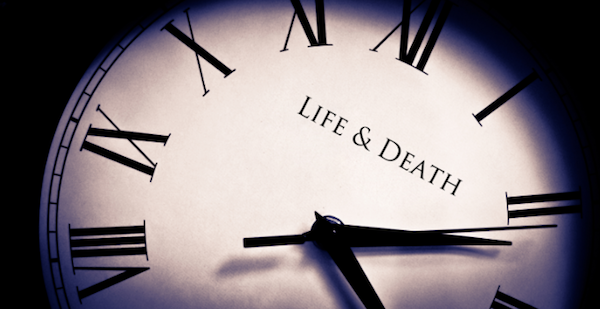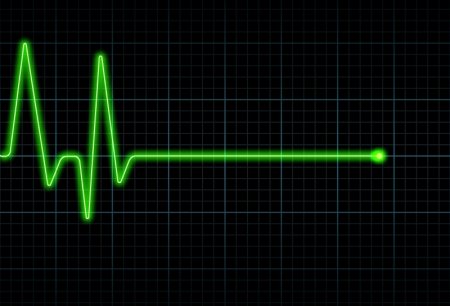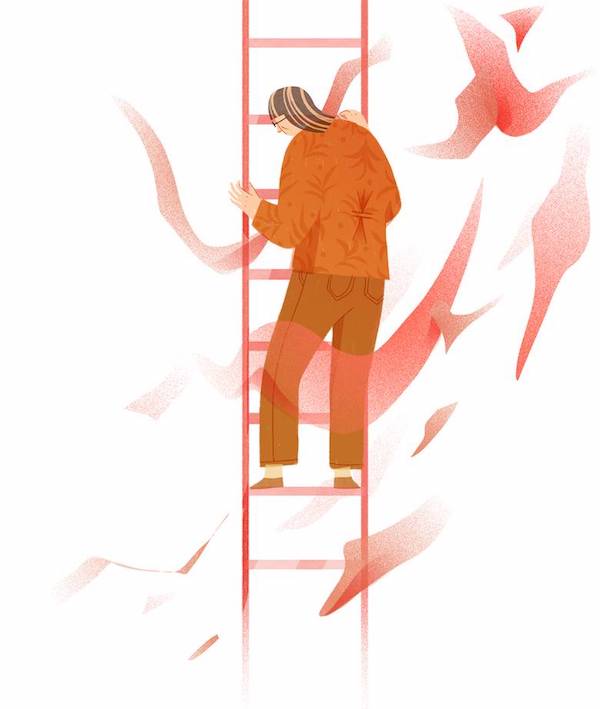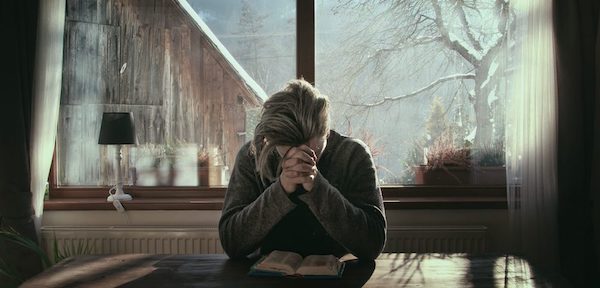It’s time to rethink the quest to control aging, death, and disease—and the fear of mortality that fuels it.

By Barbara Ehrenreich
[I] went to medical school, at least in part, to get to know death and perhaps to make my peace with it. So did many of my doctor friends, as I would find out. One day—usually when you’re young, though sometimes later—the thought hits you: You really are going to die. That moment is shocking, frightening, terrible. You try to pretend it hasn’t happened (it’s only a thought, after all), and you go about your business, worrying about this or that, until the day you put your hand to your neck—in the shower, say—and … What is that? Those hard lumps that you know, at first touch, should not be there? But there they are, and they mean death. Your death, and you can’t pretend anymore.
I never wanted to be surprised that way, and I thought that if I became a doctor and saw a lot of death, I might get used to it; it wouldn’t surprise me, and I could learn to live with it. My strategy worked pretty well. Over the decades, from all my patients, I learned that I would be well until I got sick and that although I could do some things to delay the inevitable a bit, whatever control I had was limited. I learned that I had to live as if I would die tomorrow and at the same time as if I would live forever. Meanwhile, I watched as what had been called “medical care”—that is, treating the sick—turned into “health care,” keeping people healthy, at an ever-rising cost.
In her new book, Barbara Ehrenreich ventures into the fast-growing literature on aging, disease, and death, tracing her own disaffection with a medical and social culture unable to face mortality. She argues that what “makes death such an intolerable prospect” is our belief in a reductionist science that promises something it cannot deliver—ultimate control over our bodies. The time has come to rethink our need for such mastery, she urges, and reconcile ourselves to the idea that it may not be possible.
Ehrenreich is well equipped for her mission; she has a doctorate in biology and years of social and political work behind her, as well as decades of writing. I first discovered her in medical school, when I read her early book Witches, Midwives, and Nurses: A History of Women Healers (1973). From it I learned that my small group of nine women in the otherwise male class of ’77 belonged to a long, if forgotten, tradition. I also learned that social progress is not always an upward-trending line. The author of more than a dozen books, Ehrenreich has a reputation for chronicling cultural shifts before others notice them. She delights in confronting entrenched assumptions, popular delusions, grandiose ambitions—and in teasing out their unexpected consequences.
Often she incorporates firsthand experience into her analysis. For her best-known book, Nickel and Dimed: On (Not) Getting By in America (2001), she spent a year working at unskilled jobs. In Living With a Wild God (2014), she recounted her own spiritual epiphanies in adolescence and her struggle, as a determined atheist, to understand her “furious encounter with a living substance that was coming at me through all things at once.” Before all that, in 2000, she had been diagnosed with breast cancer and begun paying special attention to surprising new science about cancer, cells, and our immune system. Now 76, Ehrenreich explores that science in Natural Causes: An Epidemic of Wellness, the Certainty of Dying, and Killing Ourselves to Live Longer. Once again, she is swept up by big questions. Not least among them is “whether the natural world is dead or in some sense alive” and behaving in unpredicted and unpredictable ways that have much to tell us about our approach to mortality.
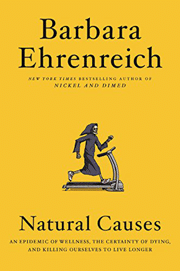 She starts by looking at the many preventive medical procedures we are encouraged, even badgered, to undergo—those regular physical exams, colonoscopies, blood tests, mammograms. She had always pretty much done what doctors advised (she underwent chemotherapy), figuring that it made sense to treat disease before illness overwhelmed the body. But after watching many fitness-obsessed people die early, and realizing that she herself is now “old enough to die,” she questions that premise. Where is the evidence that all the effort at prevention saves lives or delays death?
She starts by looking at the many preventive medical procedures we are encouraged, even badgered, to undergo—those regular physical exams, colonoscopies, blood tests, mammograms. She had always pretty much done what doctors advised (she underwent chemotherapy), figuring that it made sense to treat disease before illness overwhelmed the body. But after watching many fitness-obsessed people die early, and realizing that she herself is now “old enough to die,” she questions that premise. Where is the evidence that all the effort at prevention saves lives or delays death?
It’s hard to find, she discovers. In people who have a strong family history of heart disease, treating high cholesterol does decrease mortality, on average. But for those who don’t have that predisposition, it doesn’t. Colonoscopies have not been proved more effective at reducing deaths from colon cancer than other, cheaper, less-invasive tests. Sometimes procedures cause more trouble than they prevent. Mammograms, for instance, detect tumors that might never be fatal, and can lead to over-treatment, which carries its own risks. The insight is counterintuitive—although finding diseases early on should prolong lives, the screenings we undergo don’t seem to lower mortality rates overall—and Ehrenreich decides that she will no longer get most preventive care.
She is just as clear-eyed about other approaches to delaying our decay—exercise, diet, meditation. Though she became a “fitness devotee” herself in middle age, she finds symptoms of cultural malaise rather than health benefits in the fitness and diet obsessions of the past 40 years. Wellness programs do little to reduce companies’ immediate health-care costs, and the pursuit of fitness, Ehrenreich argues, is often simply one more “class cue.” Workouts easily become just that—work, another demand for self-discipline, competition, and control. Ironically, when she reached her 70s, her knees began giving her trouble not from age-appropriate arthritis but from overexertion.
[T]urning from her critique of preventive medicine and fitness culture as death-postponement strategies, Ehrenreich is even more unsettled by research indicating that our immune system is not the magical “protective cloak” she learned about in graduate school. What really gets her rethinking her scientific beliefs is the evolving story of the macrophage—the specialized white blood cell that she always thought of as her good shepherd “through the valley of the shadow of death.”
Macrophages have traditionally been understood as one of our crucial first-line defenses against disease. They are found throughout our body—in our bones, brain, lymph nodes, lungs, and breasts—and circulate in our blood. They look like the amoebas we learned about in high school, those slippery, one-celled, independent creatures that move by stretching out and contracting, and eat by wrapping themselves around their prey, invaginating and absorbing it. The usual story went like this: Whenever macrophages find threats to our well-being in our midst—bacteria, viruses, fungi, or cancer cells—they kill them and eat them by engulfing and absorbing them. Ehrenreich assumed that keeping her immune system—and valiant macrophages—strong through exercise, diet, and positive thoughts was the key to not getting sick, not getting cancer, not getting old.
But research around the turn of the millennium suggested a different view. Macrophages do not always kill our cancer cells; sometimes they even help them grow and spread. They escort certain cancer cells through the tight walls of our blood vessels, and protect them as they circulate in our bloodstream, looking for a congenial new home. When such a site is found—in a bone or breast, liver or lung—macrophages then support those cancer cells as they mature into the metastases that will go on to kill us.
Scientists are now discovering that the macrophage is as much wolf as shepherd in other diseases as well. It may play a role in auto-immune disorders, and even in the usual afflictions of aging—heart attacks, strokes, arthritis. We thought we knew the causes of those (cholesterol, cigarettes, inactivity) and therefore the recourse (diet, abstinence, exercise); but now it appears that inflammation, caused in large part by our macrophages, may be a trigger. Ehrenreich ponders the heretical question: Can it be that instead of working to keep our immune system healthy, we should all along have been doing the opposite?
[E]hrenreich is not, however, an apostle of unwellness, and Natural Causes is not a how-to book. Instead she focuses on the conceptual and “deep moral reverberations” of the discovery that our immune system can aid and abet a “cellular rebellion against the entire organism.” What if our convenient “holistic, utopian” view of the “mindbody” as a “well-ordered mechanism”—kept in harmony by positive thinking and solicitous tending—is wrong?
Ehrenreich proves a fascinating guide to the science suggesting that our cells, like the macrophages that sometimes destroy and sometimes defend, can act unpredictably and yet not randomly. It is almost as if our cells can choose when and how to behave—unregulated by any deterministic mechanism. But that would mean they have “agency, or the ability to initiate an action,” as she puts it. And what would that imply? If macrophages are actually deciding which cancer cells to destroy or to preserve, “maybe, crazy as it sounds, they are not following any kind of ‘instructions,’ but doing what they feel like doing.”Researchers are now finding this same agency everywhere, Ehrenreich reports—in fruit flies; in viruses; in atoms, electrons, and photons. Such discoveries must mean that agency, the capacity for making decisions—electrons jumping up a quantum level or not, photons passing through this hole in a screen rather than another—is not the rare, and human, prerogative we once thought.
Ehrenreich detects a paradigm shift in the making, away from holism and toward “a biology based on conflict within the body and carried on by the body’s own cells as they compete for space and food and oxygen.” This vision of the body as an embattled “confederation of parts”—the opposite of a coherent whole, subject to command and control—is “dystopian,” she writes. And yet it has liberating, humbling implications. “If there is a lesson here,” she proposes, it’s that “we are not the sole authors of our destinies or of anything else.” Of course, the struggle to win the battles within our body may be one we’ll never be able to resist. Who knows? Perhaps we’ll devise high-tech ways to induce, or persuade, our traitorous immune cells to cooperate with our health. But whatever technological miracles appear in our future, Ehrenreich hopes we can come to accept that the ultimate outcome will be, as it has always been, out of our control.
Researchers are now finding this same agency everywhere, Ehrenreich reports—in fruit flies; in viruses; in atoms, electrons, and photons. Such discoveries must mean that agency, the capacity for making decisions—electrons jumping up a quantum level or not, photons passing through this hole in a screen rather than another—is not the rare, and human, prerogative we once thought.
Ehrenreich detects a paradigm shift in the making, away from holism and toward “a biology based on conflict within the body and carried on by the body’s own cells as they compete for space and food and oxygen.” This vision of the body as an embattled “confederation of parts”—the opposite of a coherent whole, subject to command and control—is “dystopian,” she writes. And yet it has liberating, humbling implications. “If there is a lesson here,” she proposes, it’s that “we are not the sole authors of our destinies or of anything else.” Of course, the struggle to win the battles within our body may be one we’ll never be able to resist. Who knows? Perhaps we’ll devise high-tech ways to induce, or persuade, our traitorous immune cells to cooperate with our health. But whatever technological miracles appear in our future, Ehrenreich hopes we can come to accept that the ultimate outcome will be, as it has always been, out of our control.
No, because I’ve noticed, in my life as a doctor, that the truism is true: People die the way they’ve lived—even the demented and even, somehow, the brain-dead. The brave die bravely; the curious, with curiosity; the optimistic, optimistically. Those who are by nature accepters, accept; those who by nature fight for control die fighting for control, and Ehrenreich is a fighter.
Yes, because I’ve also noticed that everyone I’ve seen die does come to accept the inevitable loss of control at his or her finally unevadable death. Usually that happens over weeks or months, sometimes over years; occasionally it happens over days, hours, or even minutes. This acceptance is perhaps as developmentally determined as childhood, adolescence, adulthood, and old age. At the end, something magical appears to occur—something beautiful, something Other—that seems to heal the spirit, allay all fear, and settle, finally, the struggle for control.
Complete Article ↪HERE↩!

